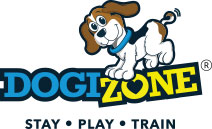What is Schutzhund, IPO, VPG ?
Schutzhund (German for “protection dog”) or IPO (for Internationale Prüfungs-Ordnung — German for “International Trial Rules”) is a dog sport that was developed in Germany in the early 1900s as a breed suitability test for the German Shepherd Dog. The test would determine if the dog displayed the appropriate traits and characteristics of a proper working German Shepherd Dog. There are three IPO/Schutzhund titles: IPO1, IPO2, and IPO3. IPO1 is the first title and IPO3 is the most advanced. Additionally, before a dog can compete for a IPO1, he must pass a temperament test called a B or BH (Begleithundprüfung, which translates as “traffic-sure companion dog test”). The B tests basic obedience and sureness around strange people, strange dogs, traffic, and loud noises. A dog that exhibits excessive fear, distractibility, or aggression cannot pass the B and so cannot go on to schutzhund.
Modern Schutzhund consists of three phases: tracking, obedience, and protection. A dog must pass all three phases in one trial to be awarded a schutzhund title. Each phase is judged on a 100-point scale with a minimum of 70 points needed in each phase to pass.
• The tracking phase tests not only the dogs scenting ability, but also its mental soundness and physical endurance. In the tracking phase, a track layer walks across a field, dropping several small articles along the way. After a period of time, the dog is directed to follow the track while being followed by the handler on a 33 foot leash. When the dog finds each article he indicates it, usually by lying down with the article between his front paws. The dog is scored on how intently and carefully it follows the track and indicates the articles. The length, complexity, number of articles, and age of the track varies for each title.
• The obedience phase is compiled of several different exercises and done in pairs with one dog working and the other doing a long down under distraction. A very precision based off leash healing pattern with out of motion sit, down, stand and recalls. Three retrieve exercises one on the flat ground, one over a meter high hurdle and one over a two meter high A-frame scaling wall. The dog and handler team is judged on the precision, speed and enthusiasm of the dog while preforming the routine. The complexity of the obedience routines vary for each title.
• In the protection phase, the judge has an assistant, called the “helper “/decoy, which helps him or her test the dog’s courage to protect himself and his handler and its ability to be controlled while doing so. The helper wears a heavily padded sleeve on one arm. There are several blinds, placed on the field that the dog must be directed to search. When the dog finds the helper, it indicates this by barking. The dog must guard the helper to prevent him from moving until recalled by the handler. There follows a series of exercises similar to police work where the dog guards the helper and transports him to the judge. At specified points, the helper either attacks the dog or the handler or attempts to escape and the dog must stop the attack or the escape by biting the padded sleeve. When the attack or escape stops, the dog is commanded to “out” to release the sleeve. The dog must out or it is dismissed. At all times the dog must show the courage to engage the helper and the temperament to obey the handler while in this high state of drive. Again, the dog must show enthusiasm and the willingness to engage the helper. A dog that shows fear, lack of control, or inappropriate aggression is dismissed. The dog and handler team are judged on precision, intensity and willingness to obey the handler. The complexity of the protection routines vary for each title.
